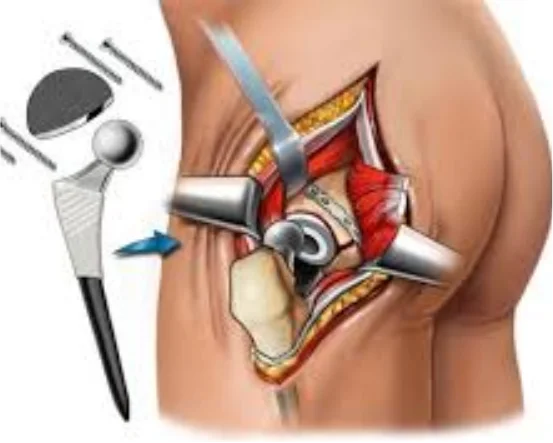Introduction
Arrhythmia are disorders of the heart’s rhythm, leading to irregular, too slow, or too fast heartbeats. While many arrhythmias are harmless or manageable with medication, some can significantly impact a person’s quality of life and pose serious health risks, including stroke, heart failure, or sudden cardiac arrest. When medication and catheter-based treatments fail, arrhythmia surgery becomes a vital option.
The most direct and vital benefit of arrhythmia surgery is refers to a set of procedures that correct or control abnormal heart rhythms through surgical intervention. These procedures target the faulty electrical pathways in the heart or supplement them with artificial pacemakers or defibrillators. Whether performed as a standalone treatment or alongside other cardiac surgeries, arrhythmia surgery has helped thousands regain heart rhythm stability and live longer, healthier lives.
Benefits of Arrhythmia Surgery
- Restoration of Normal Heart Rhythm :- The most direct and vital benefit of arrhythmia surgery is the restoration of a stable and regular heartbeat. By targeting the abnormal electrical pathways in the heart, surgeries such as the maze procedure, surgical ablation, or AV node ablation ensure that electrical impulses travel the correct route through the heart. Once the heart returns to its normal rhythm, blood is pumped more efficiently throughout the body. This allows organs and tissues to receive adequate oxygen, reducing the risk of complications like stroke or organ damage. A consistent rhythm also prevents the dangerous consequences of irregular contractions, which can cause heart fatigue and lead to heart failure if left untreated.
- Significant Reduction in Symptoms :- Many patients suffering from arrhythmia experience palpitations, dizziness, fainting spells, chest discomfort, shortness of breath, and fatigue. These symptoms can occur unpredictably, severely impacting daily activities and mental health. Following arrhythmia surgery, patients often experience a dramatic improvement or complete disappearance of these distressing symptoms. For example, those undergoing maze surgery for atrial fibrillation often regain the ability to perform routine physical activities without fear of exhaustion or collapse. The reduction in symptoms greatly improves both functional capacity and emotional well-being.
- Improved Quality of Life :- Before surgery, many patients report avoiding physical activity, social interaction, or even sleep due to fear of arrhythmia episodes. The anxiety associated with unpredictable heart rhythms can lead to emotional distress and even depression. Surgical correction helps restore freedom and confidence. Patients no longer need to plan their life around potential flare-ups or stay close to emergency care facilities. They resume walking, working, traveling, and enjoying time with family without the burden of heart rhythm irregularities. Sleep quality also improves once the heart’s rhythm is stable, leading to better overall energy levels and mood.
- Reduced Risk of Stroke :- Atrial fibrillation and other types of arrhythmia can lead to blood pooling in the heart chambers, increasing the risk of clot formation. If a clot travels to the brain, it can cause a stroke, often with devastating consequences. Similarly, inefficient heart rhythm can lead to progressive weakening of the heart muscle, resulting in heart failure. Arrhythmia surgery significantly lowers these risks. By restoring proper rhythm and cardiac output, it improves circulation, prevents blood stagnation, and enhances the mechanical function of the heart. Patients who have undergone procedures such as left atrial appendage closure alongside rhythm correction also benefit from reduced stroke risk without the need for lifelong blood thinners.
- Lower Dependence on Medications :- Antiarrhythmic drugs and blood thinners are commonly prescribed to manage arrhythmias. However, these medications come with side effects, including fatigue, dizziness, liver toxicity, and bleeding complications.One of the key advantages of arrhythmia surgery is the potential to reduce or eliminate the need for long-term medication. After successful rhythm correction, many patients are able to taper off or discontinue antiarrhythmic drugs and anticoagulants under the supervision of their cardiologist. This not only lowers the risk of drug-related side effects but also improves convenience and reduces long-term medical costs.
- Long-Term and Durable Results :- While medications often provide temporary symptom control, arrhythmia surgery offers long-term or permanent correction. The maze procedure, for example, has one of the highest success rates for long-term maintenance of sinus rhythm in atrial fibrillation patients. Pacemakers and implantable cardioverter-defibrillators (ICDs), though technically devices rather than surgery alone, also offer durable solutions when implanted during arrhythmia surgery. These tools constantly monitor and regulate the heartbeat, automatically correcting abnormalities and preventing dangerous rhythm changes.
- Improved Survival Rates :- In cases of life threatening arrhythmias, such as ventricular tachycardia or ventricular fibrillation, timely surgery often combined with an ICD implant can be life saving. Patients who undergo these procedures have significantly improved survival outcomes, especially those with a history of cardiac arrest or severe structural heart disease. Similarly, when arrhythmia surgery is performed in combination with other heart procedures such as valve replacement or coronary artery bypass, the overall prognosis improves. Addressing both the mechanical and electrical issues of the heart in one surgery enhances outcomes and reduces the chance of future cardiac events.
- Synchronized Treatment with Other Heart Conditions :- Another major benefit of arrhythmia surgery is the ability to combine it with other cardiac surgeries. Patients undergoing procedures like valve repair or bypass surgery often also have atrial fibrillation or other rhythm issues. Performing arrhythmia correction during these surgeries minimizes the need for multiple hospitalizations or repeat surgeries in the future. For example, a patient undergoing mitral valve surgery with atrial fibrillation can also receive a maze procedure or left atrial appendage closure during the same operation, providing a comprehensive approach to heart health.
- Mental and Emotional Relief :- Living with arrhythmia often causes persistent anxiety, especially in patients who have experienced syncope (fainting), hospitalizations, or have been advised about the risk of stroke. Arrhythmia can also affect relationships, work performance, and self-esteem. Surgical treatment provides not just physical relief but also emotional reassurance. Patients regain a sense of control over their lives and often report improved mental health following surgery. The confidence to return to normal life without the fear of a sudden heart event can be transformative.
Conclusion
Arrhythmia surgery is not only a treatment option but often a pathway to freedom, stability, and safety for patients living with heart rhythm disorders. From restoring normal rhythm and improving symptoms to reducing medication dependency and lowering stroke risk, the benefits of arrhythmia surgery are both life-enhancing and life-saving.
As technology advances, these procedures are becoming safer, less invasive, and more effective. For individuals struggling with persistent arrhythmias unresponsive to medications or catheter ablation, surgery offers a proven and lasting solution.
If you or a loved one are dealing with chronic arrhythmia symptoms, consulting with a cardiac surgeon can open the door to better health, peace of mind, and a future no longer dominated by heart rhythm uncertainty. Timely surgical intervention can mean the difference between a life of limitations and one of renewed vitality.























